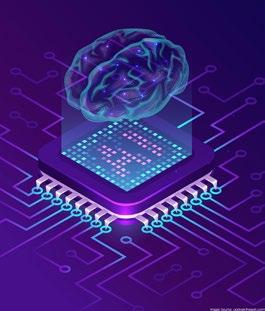
1 minute read
EDITOR’S NOTE
OVER THE LAST few months, it has been the talk of Silicon Valley. How do we make systems faster, more accurate and efficient and allow them to learn on the job as a human would?
The beginning of Artificial Intelligence (AI) can be traced all the way back to classical philosophers who attempted to describe the human thought process as a symbolic system. But it wasn’t until 1956 when the term was coined.
Advertisement
Thereafter much research was done into AI and its capabilities – much in theory. It wasn’t until 1997 that the world saw the first functioning AI systems start to emerge, with IBM’s Deep Blue becoming the first computer to beat a chess champion and then in 2011 when the Watson answering system won the quiz show Jeopardy!
This led to other major corporates realising the value in building AI systems and investing millions. We have seen AI introduced into our phones, the social networks that we use daily and other facets of our life.
But what are its benefits and harms? What do we need to know to avoid the risks? What can we do to be part of this new era of technology and science?
These are important questions, and they’re deeply interrelated and entangled. For example, one reason I’m interested in automation is that it has the potential to make automation itself obsolete.
If machines are generally better at doing certain kinds of tasks, then that decreases the need to build complex systems with employees. In fact, this paragraph was written by an AI system backed by Elon Musk, known as GPT-3.
We hope this month’s mag gives you some real intelligence into this fascinating world of AI.
Enjoy.











